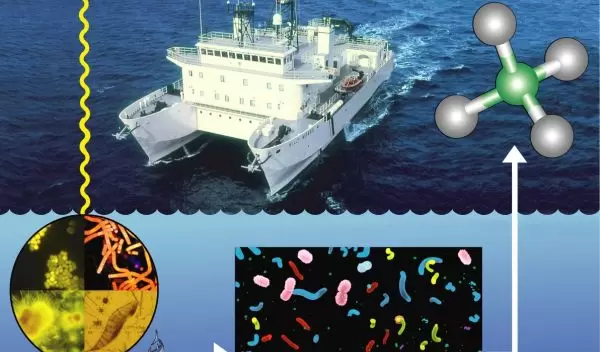
Methane Formation in the Oceans: New Pathway Discovered
A new pathway for methane formation in the oceans has been discovered, with significant potential for advancing our understanding of greenhouse gas production on Earth, scientists believe.
A paper on the findings, published in the July 2008, issue of the journal Nature Geoscience, reveals that decomposition of a phosphorus-containing compound called methylphosphonate may be responsible for an unexpected supersaturation of methane in the oceans' oxygen-rich surface waters.
Through the National Science Foundation (NSF) Center for Microbial Oceanography: Research and Education (C-MORE), oceanographer David Karl of the University of Hawaii and microbiologist Edward DeLong of the Massachusetts Institute of Technology, co-authors of the Nature Geoscience paper, are working to learn how and when microbes turn on and off their methane production genes in response to methane precursors like methylphosphonate.
"This newly recognized pathway of methane formation needs to be incorporated into our thinking about global climate change," says Karl.
Methane is a more potent greenhouse gas than carbon dioxide on a per weight basis. Although the volume of methane in the atmosphere is less than carbon dioxide, methane is much more efficient at trapping the long wavelength radiation that keeps our planet habitable. It's also responsible, therefore, for increased greenhouse warming.
"This remarkable discovery about methane production where we thought there was none is a harbinger of the ocean's changing biogeochemical nature," says Phillip Taylor, program director in NSF's Division of Ocean Sciences.
Land-based sources of methane production are well known (including extraction from natural gas deposits and fermentation of organic matter), but those sources did not account for the levels of methane observed in the atmosphere, says Karl.
Karl and colleagues became interested in the "methane enigma" and why the surface ocean was loaded with methane, well above levels found in the atmosphere.
They found a possible solution in the compound methylphosphonate, an unusual organic compound discovered in the 1960s.
Enter C-MORE.
"NSF funded C-MORE so scientists could make new discoveries about the vast genomic diversity and complexity in the microbial world, and its impacts from cellular to global scales," says Matt Kane, program director in NSF's Division of Environmental Biology. "These findings are an example of the results."
In the laboratory, the growth of certain bacteria on methylphosphonate can lead to the production of methane, but until now, the process of methylphosphonate degradation in the oceans had not been suggested as a possible pathway for the production of methane in the sea.
"When people began measuring methane in the ocean, they found that methane concentrations varied with geographical location and with water depth," says Karl. "The big surprise was that near-surface concentrations were higher than in the atmosphere above--which indicated a local production of methane in the sea. Because methane is produced only in regions devoid of oxygen, and the surface ocean contains high oxygen levels, this was perplexing."
Karl was able to combine 20 years of ocean observing data at the Hawaii Ocean Time Series (HOTS) site, called Station Aloha, with new technology that DeLong developed to produce methane in oxygenated/aerobic marine environments.
"This demonstrates the complementarity of different methods and approaches, including oceanography, microbial ecology and genomics techniques," says DeLong. "The growing databases of marine microbial genomic and metagenomic information have great potential to help us link which organisms, and which genes, are responsible for driving important nutrient and other cycles in the sea, such as aerobic methane generation."
The research also was supported by the Gordon and Betty Moore Foundation.


